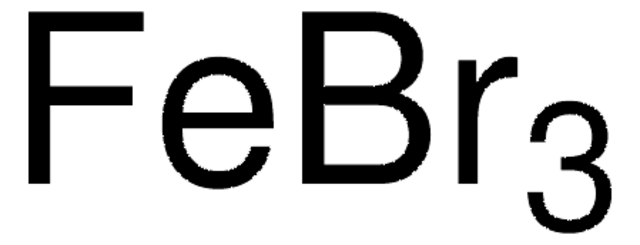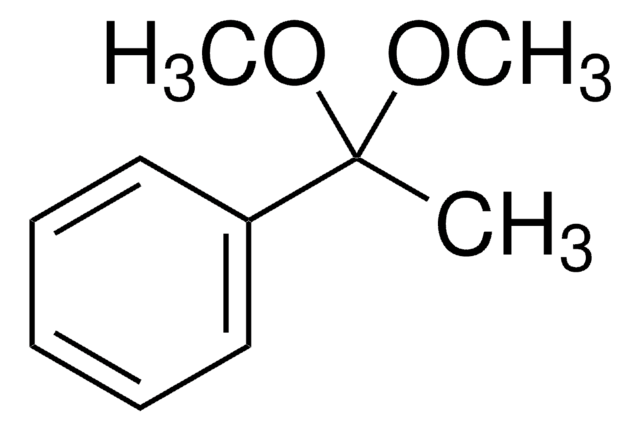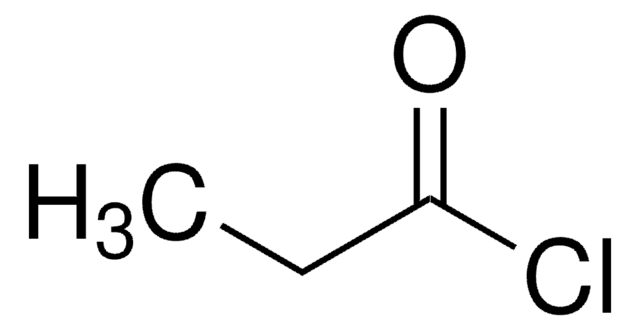451649
Iron(III) chloride
anhydrous, powder, ≥99.99% trace metals basis
Synonym(s):
Ferric chloride, Iron trichloride, Molysite
About This Item
Recommended Products
grade
anhydrous
Quality Level
vapor density
5.61 (vs air)
vapor pressure
1 mmHg ( 194 °C)
Assay
≥99.99% trace metals basis
form
powder
reaction suitability
reagent type: catalyst
core: iron
greener alternative product characteristics
Catalysis
Learn more about the Principles of Green Chemistry.
sustainability
Greener Alternative Product
impurities
≤100.0 ppm Trace Metal Analysis
mp
304 °C (lit.)
application(s)
battery manufacturing
greener alternative category
, Aligned
SMILES string
Cl[Fe](Cl)Cl
InChI
1S/3ClH.Fe/h3*1H;/q;;;+3/p-3
InChI key
RBTARNINKXHZNM-UHFFFAOYSA-K
Looking for similar products? Visit Product Comparison Guide
General description
Application
- As a precursor to fabricate nano-sized Fe-N-C catalysts for proton exchange membrane(PEM) fuel cells. FeCl3 iron precursor, helps to achieve the lowest charge transfer resistance and high peak power density.
- As an oxidant to prepare FeOCl@PPy cathode materials for Li-ion batteries with good cycling stability.
- As a precursor to fabricate amorphous multifunctional am-Fe–Bi/NF electrode for rechargeable Zinc-air batteries.
- To synthesize Fe3O4@nanocellulose/TiCl nano fillers for dye-sensitized solar cells to reduce the crystallinity of the polymer.
accessory
Signal Word
Danger
Hazard Statements
Precautionary Statements
Hazard Classifications
Acute Tox. 4 Oral - Eye Dam. 1 - Met. Corr. 1 - Skin Irrit. 2
Storage Class Code
8B - Non-combustible corrosive hazardous materials
WGK
WGK 1
Flash Point(F)
Not applicable
Flash Point(C)
Not applicable
Personal Protective Equipment
Choose from one of the most recent versions:
Already Own This Product?
Find documentation for the products that you have recently purchased in the Document Library.
Customers Also Viewed
Articles
Noble-Metal Nanostructures with Controlled Morphologies
Oxidation and reduction reactions are some of the most common transformations encountered in organic synthesis
Lithium-Ion Battery Performance: Dependence on Material Synthesis and Post‑Treatment Methods
We presents an article about a micro review of reversible addition/fragmentation chain transfer (RAFT) polymerization. RAFT (Reversible Addition/Fragmentation Chain Transfer) polymerization is a reversible deactivation radical polymerization (RDRP) and one of the more versatile methods for providing living characteristics to radical polymerization.
Protocols
Sigma-Aldrich presents an article about RAFT, or Reversible Addition/Fragmentation Chain Transfer, which is a form of living radical polymerization.
We presents an article featuring procedures that describe polymerization of methyl methacrylate and vinyl acetate homopolymers and a block copolymer as performed by researchers at CSIRO.
Global Trade Item Number
| SKU | GTIN |
|---|---|
| 451649-5G | 4061832324258 |
| 451649-1G | 4061832324241 |
Our team of scientists has experience in all areas of research including Life Science, Material Science, Chemical Synthesis, Chromatography, Analytical and many others.
Contact Technical Service








